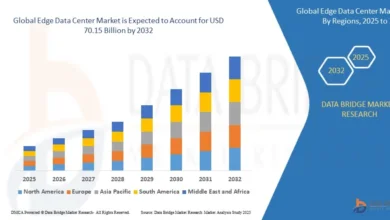Leveraging Algorithmic Predictions for Dynamic Merchandise Strategy Adjustments
Leveraging Algorithmic Predictions for Dynamic Merchandise Strategy Adjustments

The retail industry is dynamic and constantly changing due to a variety of factors. These include customer preferences, market conditions, and environmental concerns. These factors emphasize the importance of firms being innovative in their merchandise planning and strategy. Companies must implement advanced merchandise planning to remain competitive in such an environment.
Algorithmic prediction is one such innovative solution, which lets retailers make important decisions and modify their merchandise plans instantly. Retailers can significantly improve sales and margins by leveraging advanced analytics in merchandise planning or algorithmic predictions. It enables businesses to make data-driven decisions, optimize operations, and remain competitive in a dynamic market.
Role of Algorithmic Predictions in Merchandise Planning
Algorithmic predictions rely on standard mathematical formulas and advanced machine learning algorithms. They analyze large amounts of historical and real-time data to predict future trends, customer behavior, and shifting market conditions. These forecasts help retailers make better stock, price, promotion, and assortment decisions across channels.
Here’s how intelligent algorithmic predictions are actively reshaping merchandise strategy:
1. Dynamic Inventory Optimization
Traditional inventory management often relied on the historical data and instincts. With algorithmic predictions, retailers can now:
- Forecast demand with greater accuracy, reducing both stockouts and overstock situations.
- Adjust inventory levels in real-time based on emerging trends and unexpected events.
- Optimize distribution across different stores and channels based on the localized demand patterns.
2. Personalized Product Recommendations
Recommending relevant product suggestions based on customer preferences is essential for boosting sales and driving engagement. Algorithmic predictions enable:
- Generating real-time recommendations based on customer browsing history, past purchases, and current trends.
- Personalizing suggestions for specific customer segments to improve conversion rates and customer satisfaction.
- Recommending complementary products or higher-value alternatives to enhance cross-selling and upselling opportunities.
3. Data-Driven Assortment Planning
Curating the right product mix is crucial for retail success. Algorithmic predictions help in:
- Identifying emerging trends before they hit the mainstream.
- Customizing assortments to specific store locations or customer segments.
- Predicting the performance of new products based on attributes of successful items.
Implementing Algorithmic Predictions with the Right Solution
Businesses can integrate algorithmic predictions into merchandise planning smoothly when they invest in right solutions. Choosing a platform with advanced features simplifies operations and eliminates the need for investing in multiple standalone tools. Businesses can choose and invest in an integrated solution by following these unique strategies:
-
Unified Data Integration
Look for a solution that consolidates data from various sources like POS systems, online sales, and customer databases into a centralised repository. Integrated platforms can clean and preprocess these data to provide a solid foundation for accurate predictions.
-
Choose the Right Algorithms
The right software should offer a range of pre-configured algorithms tailored to different business needs. This eliminates the complexity of selecting or designing algorithms manually, allowing businesses to focus on strategy instead of technicalities.
-
Continuous Monitoring and Adjustment
Opt for software with real-time monitoring and adjustment features. Such platforms continuously evaluate predictive models and market trends, ensuring merchandise strategies remain agile and responsive to changes.
-
Empower the Team
It is essential to equip the merchandising team with training on leveraging the platform effectively. Choose a solution that reduces the learning curve and simplifies adoption. An integrated solution can help in this aspect with intuitive dashboards, and actionable insights, and promote consistent use of reliable data.
Choosing such an all-in-one solution for algorithmic prediction can enable retailers to adapt to an evolving marketplace while reducing investment costs.
The Future of Merchandise Analytics
As we look into the future, the role of algorithmic predictions in merchandise planning is set to expand even further. Emerging technologies like artificial intelligence and machine learning will enable even more sophisticated predictive models, capable of:
- Anticipating and responding to micro-trends in near real-time.
- Incorporating external data sources, such as social media sentiment and weather patterns, for more nuanced predictions.
- Automating certain aspects of merchandise planning, allows human planners to focus on strategic decision-making.
Bottom Line
The world is becoming increasingly competitive, making timely and accurate movement planning essential. Algorithms play a crucial role in identifying necessary changes to merchandise plans. Relying on these tools is no longer a luxury but a necessity.
Therefore, retailers can incorporate these methods to engrave significant competence in the current market environment. They can also analyze the inventory, price, and assortment to bolster decision-making.
As the retail environment progresses, the one who relies on the sophisticated algorithms provided forecast is the most likely to succeed. Merchandise planning as a field has now reached the stage where data and analytics can be used intelligently and now is the time to embrace it.




